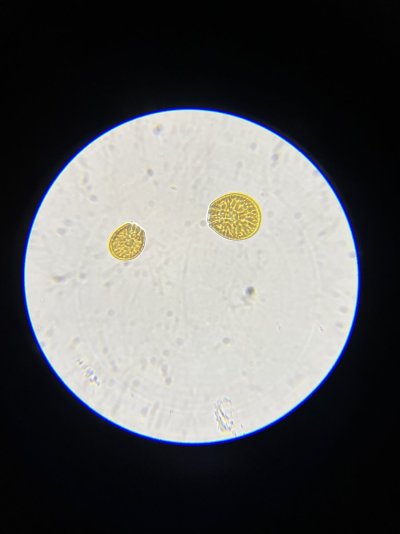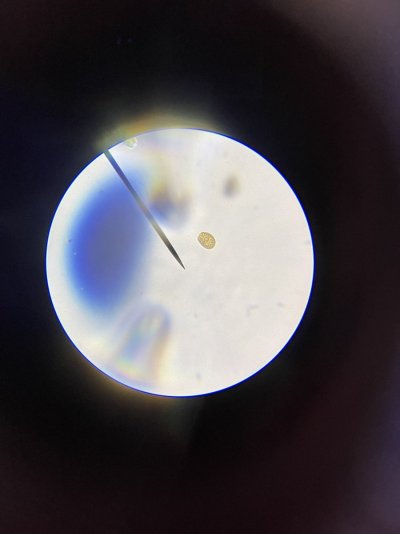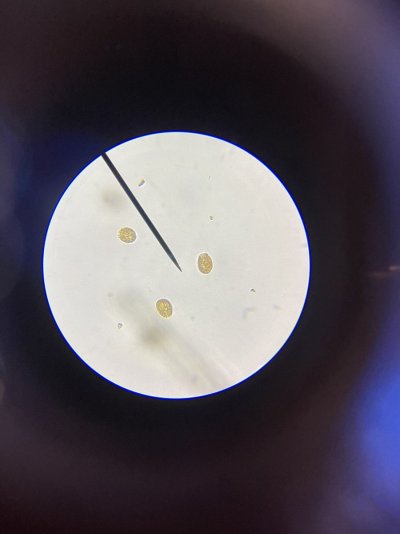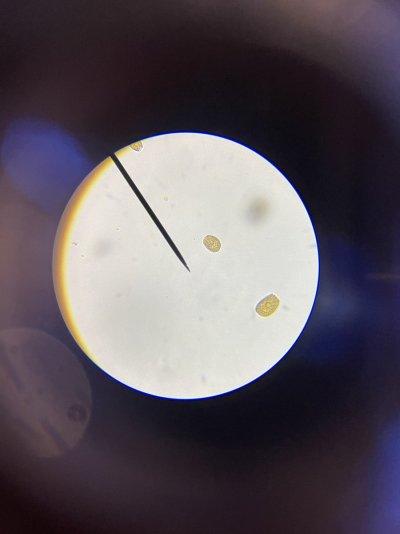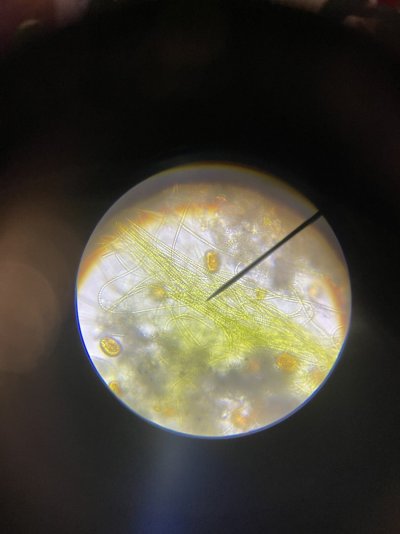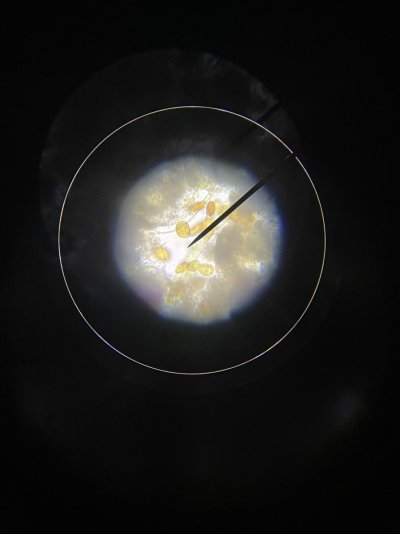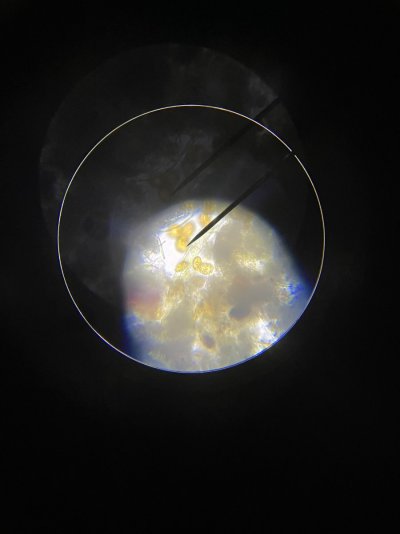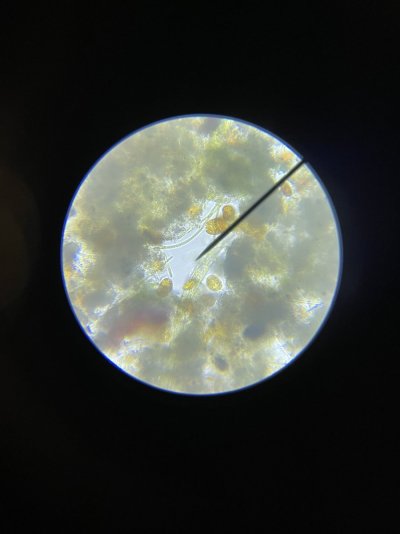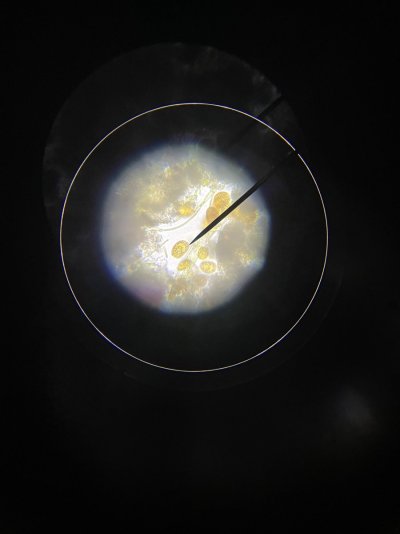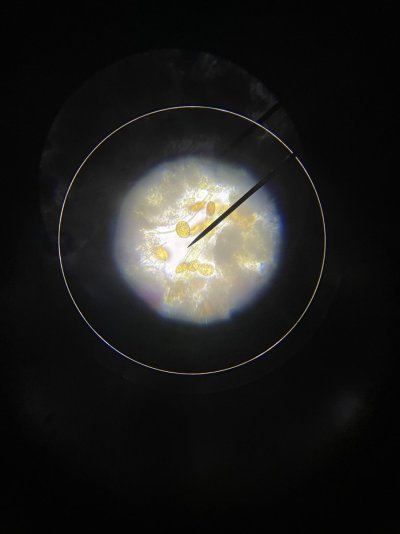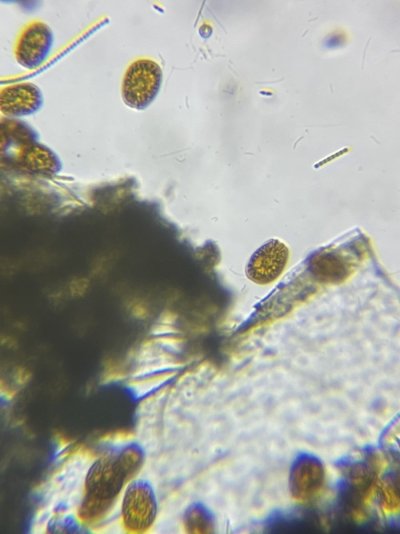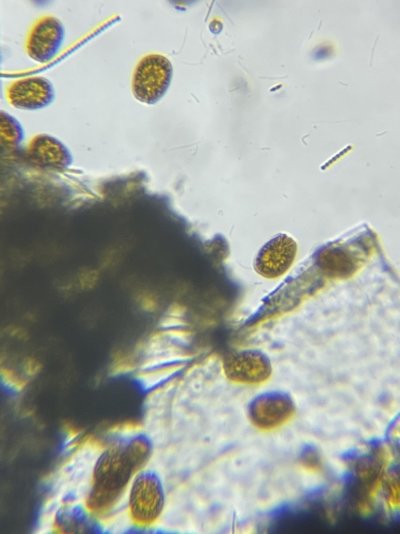Navigation
Install the app
How to install the app on iOS
Follow along with the video below to see how to install our site as a web app on your home screen.
Note: This feature may not be available in some browsers.
More options
You are using an out of date browser. It may not display this or other websites correctly.
You should upgrade or use an alternative browser.
You should upgrade or use an alternative browser.
Dino ID please. Possibly Amphidinium?
- Thread starter fishy408
- Start date
- Tagged users None
Looks like Prorocentrum to me. Same phylosophy of management of Amphis.
- Joined
- Apr 17, 2018
- Messages
- 120
- Reaction score
- 73
Looks like Prorocentrum to me. Same phylosophy of management of Amphis.
After a little more reading, i notice both the Procentrum and Amphidinium looks very similar. Are you thjnkkng Procentrum becauae the Amphidinium usually have a hooked mouth?
Exactly. The mouth is the epiconeAfter a little more reading, i notice both the Procentrum and Amphidinium looks very similar. Are you thjnkkng Procentrum becauae the Amphidinium usually have a hooked mouth?
- Joined
- May 22, 2016
- Messages
- 6,573
- Reaction score
- 10,154
yes. large cell amphidinium.Are these Dinos Amphidinium?
Btw I’ve asked in multiple threads, but how can I make R2R not compress my images? Do I need to lower the quality in my camera settings maybe so photo is smaller mb? It always compresses and looks bad resolution when I post.
Are the green things cyano? Kind of weird I see pics online of cyano looking green when generally cyano is reddish, brownish, or purplish?
Anyone know a repository of microscopic photos comparing dinos , cyanos, diatoms, and other nuisance bacteria/algae?
Cyano can be green. The green things are cyanoAre the green things cyano? Kind of weird I see pics online of cyano looking green when generally cyano is reddish, brownish, or purplish?
I found answer. Taricha made this thread which includes a PDF for others lookingAnyone know a repository of microscopic photos comparing dinos , cyanos, diatoms, and other nuisance bacteria/algae?

Dinoflagellate Identification Guide
I've had this laying around for a while. Had some recent interest, so I tweaked it a bit and am posting it. Not really about cures just ID pictures, videos, and a few short facts. Hope it can be helpful.
 www.reef2reef.com
www.reef2reef.com
Here are some better photos. It looks like Prorocentrum to me according to the PDF in this thread. What do you think?Possibly yours show the amphidinium epicone

Dinoflagellate Identification Guide
I've had this laying around for a while. Had some recent interest, so I tweaked it a bit and am posting it. Not really about cures just ID pictures, videos, and a few short facts. Hope it can be helpful.
 www.reef2reef.com
www.reef2reef.com
Attachments
Here are some better photos. It looks like Prorocentrum to me according to the PDF in this thread. What do you think?

Dinoflagellate Identification Guide
I've had this laying around for a while. Had some recent interest, so I tweaked it a bit and am posting it. Not really about cures just ID pictures, videos, and a few short facts. Hope it can be helpful.www.reef2reef.com
The first two photos don't have enough magnification or clarity to say for sure but the second two are clearly LCA (Large Cell Amphidinium). There are a lot of people giving differing recommendations on the thread but IME the best treatment is:
1) Silicate dosing with water glass (36-41% sodium silicate) at 0.2 ml/15 gallons of tank volume daily. The daily dose should be mixed in 200-300 ml of RO/DI and slowly poured in a high flow area.
2) Maintain elevated nutrient levels (actually where I aim all the time for nutrients) of NO3 5-10 and PO4 of 0.06-0.1
3) Dose phyto daily
4) Add pods when you can(cost, availability are issues)
5) Increase your biodiversity any way you can (adding rock from a mature, successful tank, "mud" products like those from Garf, AF Lifesource, etc.
I thought amphidinium have a curved beak? Mine don't seem to have that? I'll post some more picsThe first two photos don't have enough magnification or clarity to say for sure but the second two are clearly LCA (Large Cell Amphidinium). There are a lot of people giving differing recommendations on the thread but IME the best treatment is:
1) Silicate dosing with water glass (36-41% sodium silicate) at 0.2 ml/15 gallons of tank volume daily. The daily dose should be mixed in 200-300 ml of RO/DI and slowly poured in a high flow area.
2) Maintain elevated nutrient levels (actually where I aim all the time for nutrients) of NO3 5-10 and PO4 of 0.06-0.1
3) Dose phyto daily
4) Add pods when you can(cost, availability are issues)
5) Increase your biodiversity any way you can (adding rock from a mature, successful tank, "mud" products like those from Garf, AF Lifesource, etc.
Hmm maybe it does have beak but from angle isn’t pronounced? They do have 2 little openings which kind of look like the 2 openings on amphidinium. I’ll try and get more photos
Attachments
I thought amphidinium have a curved beak? Mine don't seem to have that? I'll post some more pics
The "curved beak" appearance is really only visible on SCA. With LCA all you see is two "slits" at the front of the cell, a central clear looking "slit" and some flattening of the front end of the cell.
Here's your picture , blown up and marked with blue lines for the side slits and red for the center one.
Last edited:
Thank you very much. How certain are you that it’s LCA vs Prorocentrum ?The "curved beak" appearance is really only visible on SCA. With LCA all you see is two "slits" at the front of the cell, a central clear looking "slit" and some flattening of the front end of the cell.
Here's your picture , blown up and marked with blue lines for the side slits and red for the center one.

@taricha and others who can chime in pretty please
Lol ok so I've started 2 treatments now. I'm willing to shift to a 3rd, but I think I may be trying too many different things too quickly.The first two photos don't have enough magnification or clarity to say for sure but the second two are clearly LCA (Large Cell Amphidinium). There are a lot of people giving differing recommendations on the thread but IME the best treatment is:
1) Silicate dosing with water glass (36-41% sodium silicate) at 0.2 ml/15 gallons of tank volume daily. The daily dose should be mixed in 200-300 ml of RO/DI and slowly poured in a high flow area.
2) Maintain elevated nutrient levels (actually where I aim all the time for nutrients) of NO3 5-10 and PO4 of 0.06-0.1
3) Dose phyto daily
4) Add pods when you can(cost, availability are issues)
5) Increase your biodiversity any way you can (adding rock from a mature, successful tank, "mud" products like those from Garf, AF Lifesource, etc.
1st (ran for 3 days) I started with carbon dosing based on this thread:
https://www.reef2reef.com/threads/dinoflagelates-a-disruptive-treatment.926454/page-10#post-10851676
I did this for 3 days, and decided because my phosphates and nitrates are teetering close to or at 0, I should try the below method instead:
2nd (Only have run for 2 days so far) @vetteguy53081 h202 method: Thread can be found here, I don't know if he has a master thread about this method, but he talks about it as comments in lots of other threads: on page 1: https://www.reef2reef.com/threads/cyano-or-dynos.928137/
having experience with this and helping many, its dino.
Prepare by starting with a water change and blow this stuff loose with a turkey baster and siphon up loose particles.
Turn lights off (at least white and run blue at 10-15% IF you have light dependant corals) for 5 days and at night dose 1ml of 3% hydrogen peroxide per 10 gallons for all 5 nights. If you dont have light dependent coral- turn all lights off.
During the day dose 1ml of liquid bacteria (such as bacter 7 or XLM) per 10 gallons.
Clean filters daily and DO NOT FEED CORAL FOODS OR ADD NOPOX as it is food for dinos.
Day 5,, you can start with blue lights - ramping up and work your white lights up slowly
Now I hear people say h202 can harm shrimp, sps, and maybe other things.
How the hell do I choose a method lol. Any opinions greatly appreciated. I'm willing to buy whatever is needed, but of course prefer not to spend $400-$600 on a UV for my 300g if not needed.
Similar threads
- Replies
- 1
- Views
- 64
- Replies
- 5
- Views
- 55
- Replies
- 10
- Views
- 794
- Replies
- 5
- Views
- 149
New Posts
-
-
-
Sexual dimorphism identification of Chelmon rostratus, the Copperband Butterfly,
- Latest: MalteserReefer
-
-


